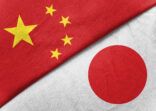After Chinese equities plunged last year, the asset class’ valuations became “ridiculously” attractive, according to Hong Kong-based portfolio manager for emerging market equities at Gam Investments Rob Mumford, who joined the firm in January.
The MSCI China Index is now trading at 10.6 times on a price-to-earnings (P/E) basis, which is slightly below the three year average of 12 times. But stripping out the more expensive Chinese stocks, such as Alibaba and Tencent, gives a clearer picture of where valuation levels are.
“Although the market looks like it is in neutral territory, when you strip out Alibaba and Tencent, the market is trading incredibly cheap,” he said at a recent media briefing.

Some investors, however, may see low valuations as a value trap, in which a cheap stock is cheap for good reasons — low earnings multiples or poor cash flow for example — and will continue to trade at low prices or drop further, Mumford said.
However, he believes the criteria for a value trap doesn’t apply to many undervalued China equities.
“Despite the difficulties posed to the asset class last year, such as the strong US dollar and the trade war tensions, you still saw 8% earnings growth in the China equity market.
“In addition, even before the trade talks broke down in May, authorities laid out a range of monetary and fiscal tools to deal with the economy, [which should propel domestic consumption].”
He said a number of sectors have continued to provide huge earnings growth rates, which is positive for stock prices.
For example, in the Chinese banking and construction sectors, stocks are trading at around five times price-to-earnings but have earnings growth of around 20% and provide a dividend yield of 5%, according to Mumford.
Property stocks are also expected to benefit from the government stimulus.
“The property sector is a potential beneficiary if we see more monetary stimulus, as we could see mortgage rates go down,” he explained. Like the banking and construction sectors, property stocks trade at five-to-six times P/E with earnings growth of around 20%.
A number of other fund managers have warmed to the Chinese property sector, including BNP Paribas Asset Management, Insight Investment and Allianz Global Investors, especially because the sector is also expected to be resilient against the trade tensions between the US and China.
Valuation conscious
Mumford explained Gam’s emerging market strategy is valuation-focused, although it also invests in growth stocks.
Mumford added that its global emerging market (GEM) team has been adding Chinese names to its GEM strategy since the end of 2018.
“At the end of last year, our valuation screens were saying that China is looking ridiculously cheap, so we increased significantly to the asset class, including the A-share market.”
However, as Chinese stock prices moved up, other markets, such as India, became more attractive.
“We became neutral in [mid-April] on Chinese equities as there were other markets that had more attractive valuations. The structural argument is still there for Chinese equities, but there were other issues such as the trade war, so we rotated into the domestic-centric markets in South Asia, including India.
“But we have been edging back into China into these weeks as the market is starting to look cheaper again.”
China accounts for the largest asset allocation for the Gam Star Emerging Equity Fund (managed by Tim Love) at 26.8%, but is below the 31.11% allocation of its benchmark index, according to the fund factsheet.
Fund allocation vs benchmark index (MSCI Emerging Markets Index)

The Gam Star Emerging Equity Fund versus the MSCI Emerging Markets Index


















